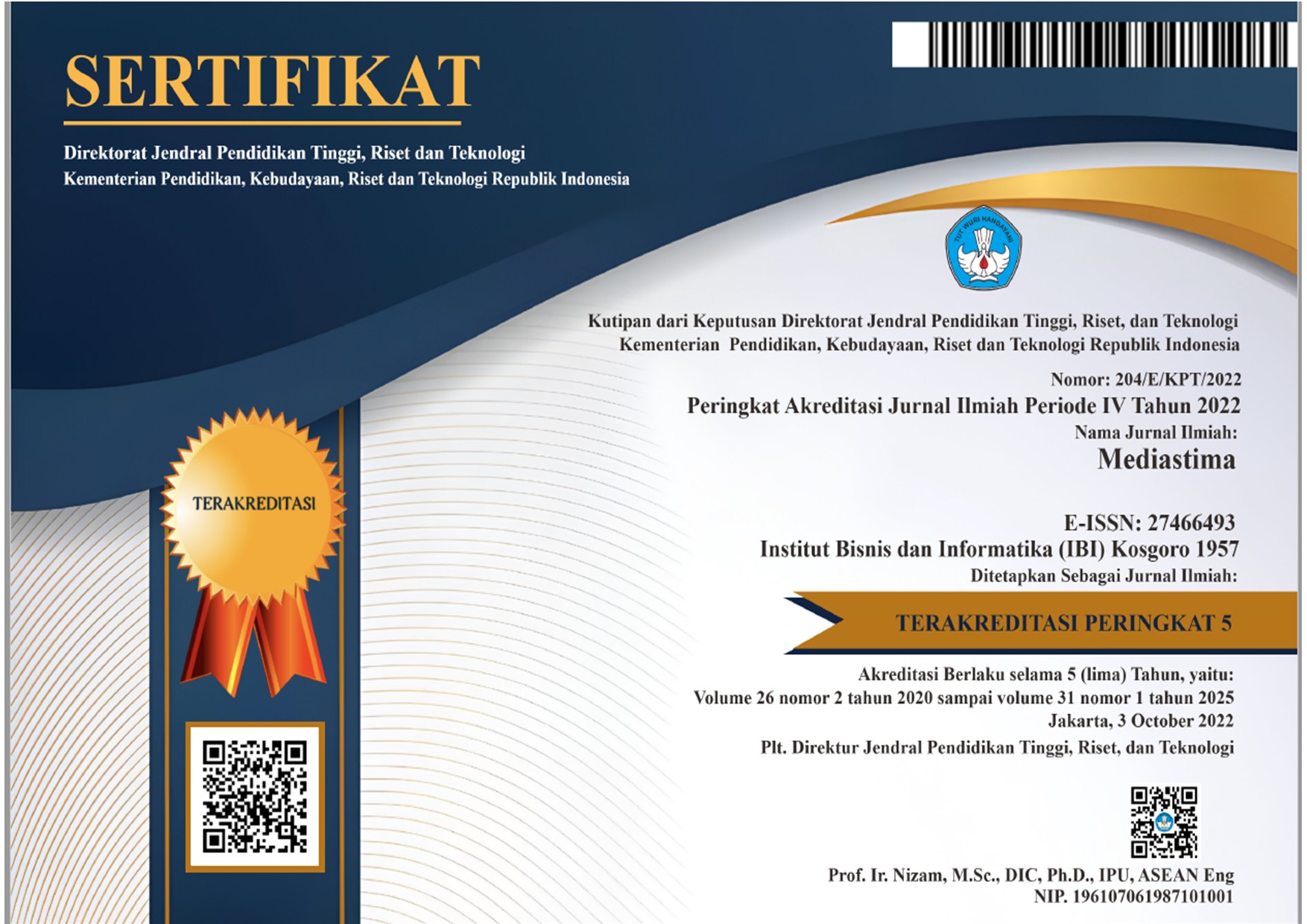ANALISIS STRATEGI BISNIS ONLINE SHOP HITZ_TWINZSHOP
DOI:
https://doi.org/10.55122/mediastima.v28i1.395Keywords:
Toko Online, Hitz_twinzshop, Bisnis Strategi, Analisis SWOTAbstract
Salah satu usaha rintisan yang diinisiasi oleh generasi muda adalah online shop ‘Hitz_twinzshop’. Bisnis ini didirikan pada tahun 2013 didirikan oleh 2 orang yaitu Ibu Devita & ibu Lubna. Analisis critical success factor yang dilakukan pada konsumen online shop ‘Hitz_twinzshop’ dengan membandingkan produk sejenis pada online shop yang juga sejenis, diperoleh bahwa nilai online shop ‘Hitz_twinzshop’ adalah 2,6. Angka tersebut menunjukkan bahwa bisnis ini layak untuk dikembangkan dengan strategi yang tepat. Tujuan penelitian ini adalah untuk dapat memformulasikan strategi bisnis yang tepat bagi perkembangan online shop “Hitz_twinzshopâ€Â. Teknik analisis data untuk mendapatkan strategi bisnis yang dilakukan adalah menggunakan analisis SWOT. Hasil penelitian menunjukkan bahwa strategi yang harus dilakukan oleh online shop Hitz_Twinz adalah: melakukan sistem transaksi dengan cash on delivery (COD), memperluas marketplace dan tidak hanya bergantung pada marketplace Shopee, berupaya untuk membuat desain sendiri sehingga produk menjadi lebih unik, berkolaborasi dengan produk lain dan mengikuti event-event pameran sehingga toko dapat lebih dikenal masyarakat.
Downloads
Published
How to Cite
Issue
Section
Accepted 2022-04-02
Published 2022-04-25






